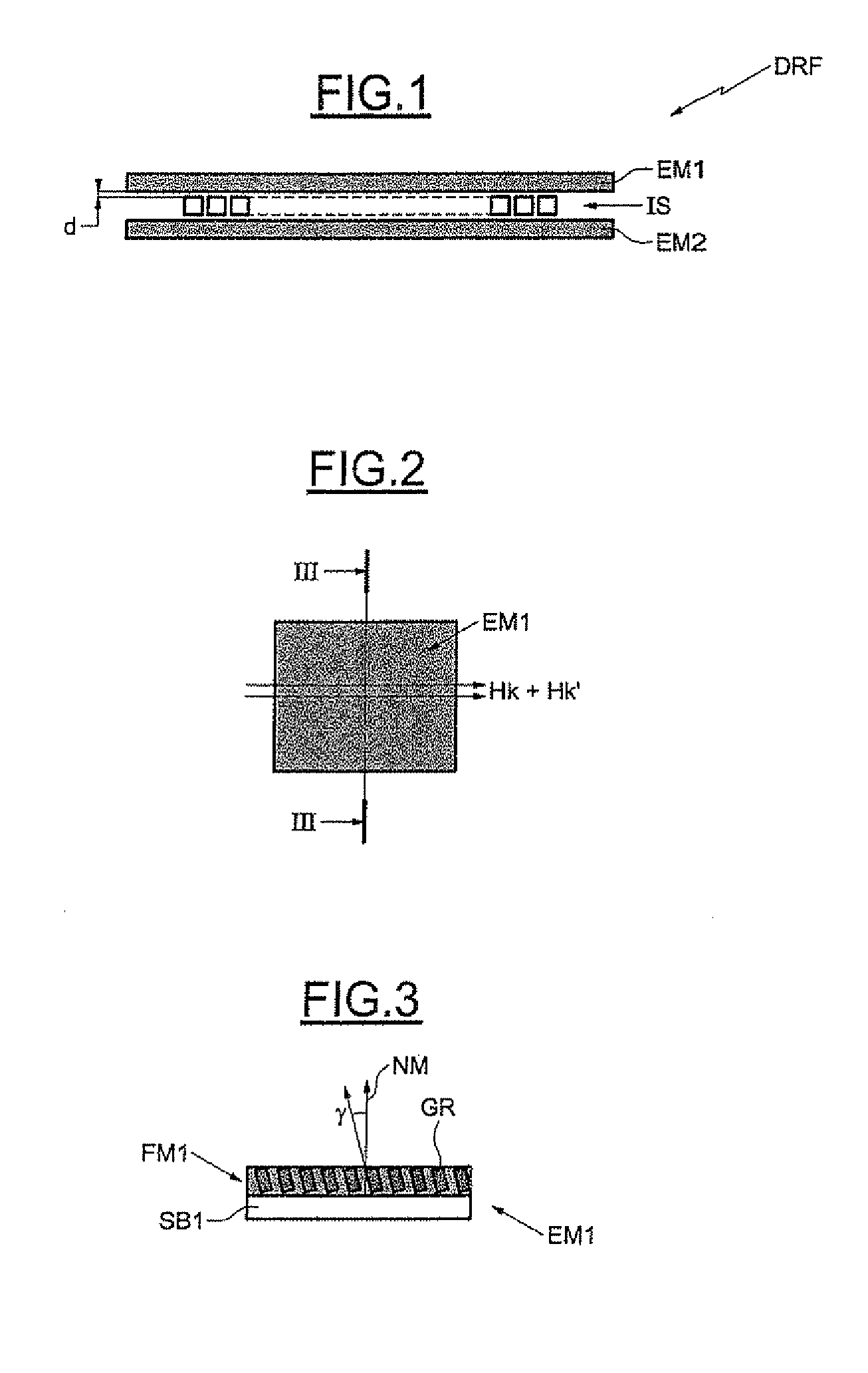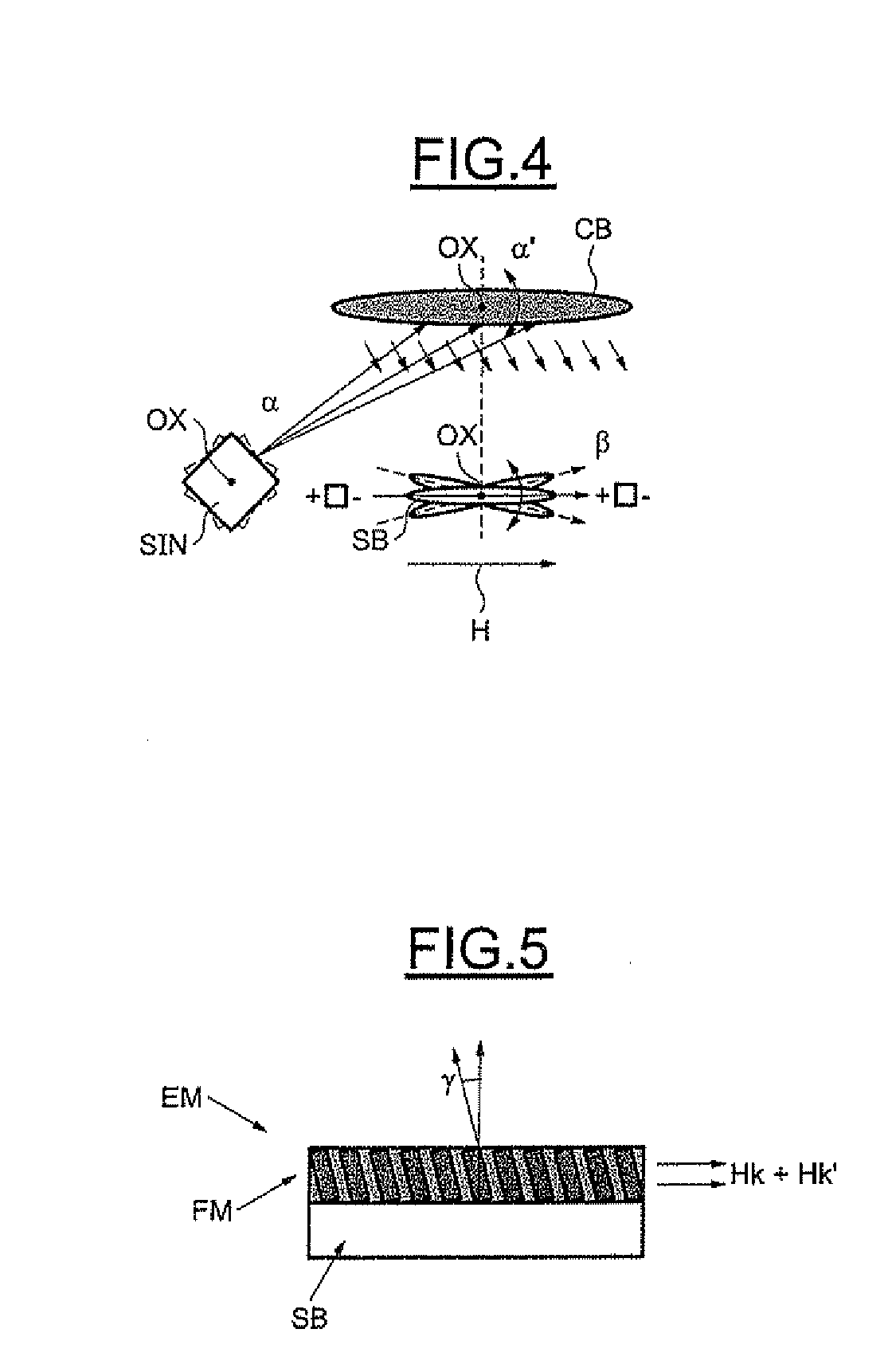Radio Frequency Device with Magnetic Element, Method for Making Such a Magnetic Element
a radio frequency device and magnetic element technology, applied in the direction of magnetic layers, ultrathin/granular films, ion implantation coatings, etc., can solve the problems of discontinuous magnetic circuits, high cost, and high cost, and achieve the effect of simple (linear) control of the anisotropy reinforcement
- Summary
- Abstract
- Description
- Claims
- Application Information
AI Technical Summary
Benefits of technology
Problems solved by technology
Method used
Image
Examples
Embodiment Construction
[0032]In FIG. 1, the reference DRF denotes a radiofrequency device according to an embodiment of the invention comprising a conducting element IS formed from a spiral coil sandwiched between a first magnetic element EM situated on top of the coil IS and a second magnetic element EM2 is situated underneath the coil. The two magnetic elements are continuous elements and are advantageously separated from the conducting element IS by a relatively small distance d. This distance d is, for example, less than or equal to 5 μm. The configuration of the device DRF allows a virtually-closed magnetic circuit to be obtained using continuous magnetic elements.
[0033]As is illustrated more particularly in FIGS. 2 and 3, each magnetic element EM1 comprises a substrate SB1 coated with a continuous granular magnetic film SM1 whose grains exhibit an oblique orientation to the normal NM to the substrate SB1. The orientation angle γ is, for example, around 60° and may, more generally, be in the range fr...
PUM
| Property | Measurement | Unit |
|---|---|---|
| angle of inclination | aaaaa | aaaaa |
| angle of inclination | aaaaa | aaaaa |
| ferromagnetic resonance frequency | aaaaa | aaaaa |
Abstract
Description
Claims
Application Information
 Login to View More
Login to View More - R&D
- Intellectual Property
- Life Sciences
- Materials
- Tech Scout
- Unparalleled Data Quality
- Higher Quality Content
- 60% Fewer Hallucinations
Browse by: Latest US Patents, China's latest patents, Technical Efficacy Thesaurus, Application Domain, Technology Topic, Popular Technical Reports.
© 2025 PatSnap. All rights reserved.Legal|Privacy policy|Modern Slavery Act Transparency Statement|Sitemap|About US| Contact US: help@patsnap.com



